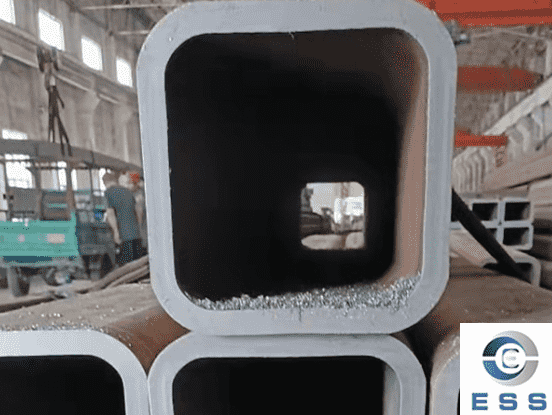Why do smls pipes deform during rolling?
Longitudinal rolling refers to a rolling method in which the mainstream direction of deformed metal is always the same as the forward direction of the rolled piece during the rolling process, that is, the deformed metal flows along the rolling center line toward the exit of the rolled piece. The pipe rolling mill operates in a deformed pass formed by the rolls. Cross rolling is a rolling method in which the deformed metal flows obliquely at a certain angle to the rolling center line in the pass. The specific manifestation is that the rolled piece advances in a spiral shape after deformation. As a special case of cross rolling, only when the rolls of the cross rolling mill make planetary motion around the rolling center line, theoretically, the rolled piece can move linearly relative to the rolling center line.

The smls pipe hot rolling production process is a secondary extension deformation rolling after perforation. Its purpose is still to make the wall thickness of the deformed rough pipe reach or be close to the wall thickness of the final product, while also having good surface quality and internal structure. Therefore, as far as the seamless steel pipe rolling process is concerned, the longitudinal rolling process and the cross-rolling process only have different deformation methods. Cold drawn smls pipes are usually rolled longitudinally. Cross rolling is the main production process of thermal expansion pipe.
Advantages of the cross-rolling process
(1) Low cost, many varieties, and can produce high alloy and special pipes.
(2) It can be heated and deformed at one time, making production flexible and irreplaceable.
Cross rolling process defects
(1) The cross-rolling mill has small deformation and small elongation coefficient, and its ability to roll thin-walled steel pipes is lower than that of longitudinal rolling.
(2) There are obvious spiral marks left by hardening on the inner surface of the finished steel pipe of the cross-rolling mill. Generally speaking, the height difference or depth of such spiral traces is 0-0.20mm.
The characteristics of longitudinal roll forming are:
(1) The axes of the two work rollers are parallel and the rotation directions are opposite;
(2) The rolled piece moves along a straight line perpendicular to the axis of the roll. The entry and exit of materials is done by the drum itself. Including various roughing mills, blanking machines, section steel rolling mills, plate and strip mills, automatic pipe rolling mills and various finished longitudinal rolling mills. Two types of products can be produced: one is products with equal cross-sections in the length direction. The other is a variable cross-section along the length.













 Eastern Steel Manufacturing Co.,Ltd not only improve product production and sales services, but also provide additional value-added services. As long as you need, we can complete your specific needs together.
Eastern Steel Manufacturing Co.,Ltd not only improve product production and sales services, but also provide additional value-added services. As long as you need, we can complete your specific needs together.










